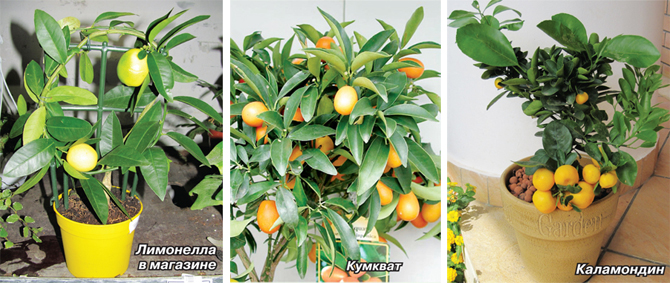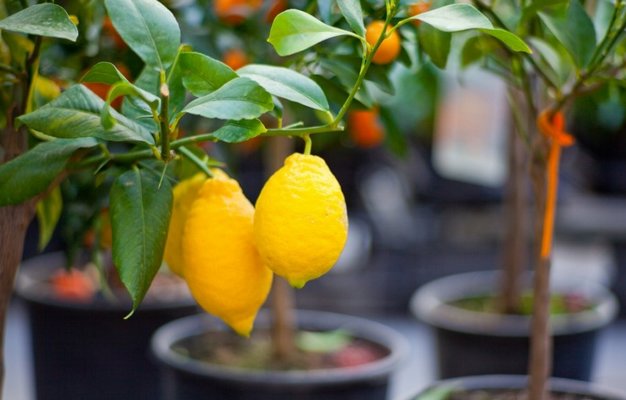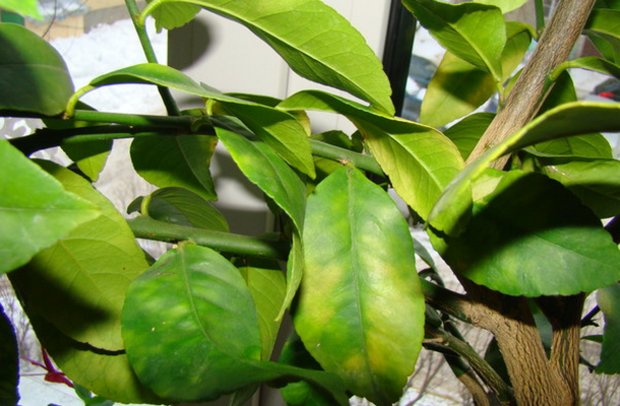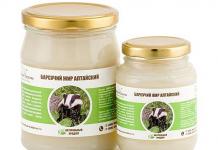Many amateur growers want. In addition to aesthetic qualities, citrus fruits, including lemons, have a very useful properties: the leaves emit phytoncides, which have a detrimental effect on pathogens in the apartment, the fruits have been used since ancient times in medicinal purposes due to the presence in them a large number vitamin C. And although citrus fruits are not champions among plants in its content, its unique combination with vitamin P prevents it from being destroyed during heat treatment.
Grow lemon at home from seed.
There are several ways to start a citrus tree at home. The first thing that comes to mind is planting a lemon, orange or tangerine seed from the fruit you have eaten. They germinate within a month and then grow without problems in rooms, since they are adapted to these conditions from the very beginning. However, citrus fruits grown from seeds bloom very late at 12-15 years.
You can try to shorten this time a little by making a constriction of the bark with a wire ring on one of the large branches or on the trunk if it is not the only one. The constriction interferes with normal sap flow, accumulating in the crown substances necessary for the formation of flower buds. The ring is removed after the buds appear. This technique is widely used in viticulture and horticulture.
It must also be remembered that citrus fruits begin to bear fruit only on branches of 4-5 orders of magnitude. That is, the trunk is the zero branching order, the branch branching from it is the first order. The branch that branches out from the first-order branch is the second-order branch, and so on. Each subsequent branch, receiving less and less nutrition, will stimulate the formation of flower buds.
To form such a crown, it is necessary to regularly pinch the growing shoots. So the stem is cut at a height of about 20 cm, the branches of the first order when a length of 10 cm is reached, all subsequent orders are at a length of 5 cm. root system and crown, thus pushing the plant to flowering. All these techniques help to speed up the onset of fruiting somewhat.

Keep in mind that if you are planting a lemon seed from the market, you are actually taking it from a regular fruit tree... It is no less than our apple tree in size. It is better to look for the fruit taken from the indoor lemon and plant its seed. Such a plant adapts more easily at home, grows more compact and begins to bear fruit faster.
Grow a lemon at home from a branchSometimes you can get a lemon tree stalk from the market. Moreover, next to the mustachioed uncle selling it, there is even a fruiting lemon, from which this cutting was supposedly taken. And the plant is also called the name of some noble variety. But all this, rather, for gamblers in the "sport lotto". If time and finances allow, then you can play.
If you are more fortunate, and one of the "friends of your acquaintances" already has a fruiting tree, then you can ask for a cutting. Having rooted it, quickly enough (in 3-4 years) you will get a fruiting tree.
For this, the cutting must be taken with matured wood with 4-6 healthy leaves. They do not need to be cut or shortened. Stock nutrients in the leaves will help rapid rooting.
You can cut the cutting both under the bud and in the middle between the buds. With an oblique cut of the shoot, the roots are formed worse. For rooting, the stalk must be stuck vertically into washed river sand, watered, sprayed, covered plastic bag or a jar and put in a bright, warm place (about 27 C), but not in the sun. The roots begin to form after about a month.
If we first put drainage in the pot in which our twig is rooting, then a layer of earth and pour sand on top, then as they grow, the roots will find themselves nourishment.
Care at this time consists in maintaining the humidity of the air by spraying and in regular ventilation to gradually get used to the room air. We begin airing at ten minutes and gradually increase the time. You can completely remove the shelter after the start of the formation of a new growth on the handle.

If the temperature of the soil during rooting is higher than the temperature of the surrounding air, then first the formation of roots occurs, and then the formation of growth. If on the contrary, then the growth may begin earlier than the roots have formed, and the plant will quickly deplete, without having time to take root. Therefore, it is recommended to root the cuttings with bottom heating.
... Crown formation
A tree with a beautiful crown will decorate the interior of any room. But remember that citrus fruits bear fruit on shoots of 4-5 orders of magnitude. That is, the correct crown is also necessary for fruiting. After successful rooting, we will do the pinching for the purpose of shaping.
Sometimes the first buds appear already on the branches of the zero and first orders. Such buds must be removed immediately to avoid depletion and death of the plant.
To form a neat crown, it is also necessary to regularly rotate the plant, only this should be done gradually, turning the tree by about 10 degrees in 10 days.
As a result, within a year the pot with the plant will be rotated a whole circle, which contributes to the uniform development of the crown.
If narrow window sills do not allow this, then it is possible to form a flat crown, for which all branches that go towards the room or abut against the glass are cut or bent parallel to the glass and fixed in this position with wire or threads. We periodically remove the clamps and check the position of the branches.
If the result does not suit us, we repeat the commit. Leaves in such a flat crown do not block each other and get enough light.
With any formation, it is necessary to strictly monitor that fatty shoots (wen, or "tops", as they are also called) do not appear on the lower part of the trunk, and inside the crown. Absorbing a lot of nutrients, they grow very quickly in the vertical direction and drown out the development of the entire plant. Therefore, "tops" should be removed immediately when they appear.
WANT IMMEDIATELY, WANT NOW!
Impatient citrus lovers who don't want to wait for the lemon to grow can walk through the flower shops and pick an already fruiting tree.
A few words about the assortment offered by flower companies. I must say that it is rather meager. Of several dozen species and varieties of citrus fruits, only 3-4 species are on sale. The most available are: kumquat (aka fortunella, kinkan), calamondin or citrofortunella hybrid between mandarin and kinkan, limonella hybrid of lime and kumquat and, in fact, lemon.
If you decide to grow citrus for the fruit, you will have to be patient. They ripen for a very long time. Tangerines - in 5-6 months, lemons - in 7, oranges - in 8-9 months. Truly, the plant bears the fruit like a child, and our task is to help it with good care.
WHAT ARE THEY?
Kumquat fruits resemble miniature oval oranges measuring 3 to 5 cm in length and 2 to 4 cm in width. They taste like tangerine, only slightly sour. Kumquat can be eaten with sweet peels. The fruits are often sold candied.
The fruits of calamondin are small, up to 4 cm in diameter, yellow-orange in color, with a thin skin and a large number of seeds, bitter-sour in taste. Now variegated varieties of calamondin of more compact sizes have been bred. The fruits ripen for about a year to an orange-golden color and remain on the plant for another six months. Imagine how long this beauty lasts! Then the fruits gradually fall off.
Limonella fruits are also small, oval, yellow-green to bright yellow when ripe. In green fruits, the juice tastes very much like lime, as the peel turns yellow, it becomes more and more like lemon. Ripe fruits have a thin, sweet skin and sweet, bitter-tinged flesh. They can be added to soups and salads, prepare a seasoning for meat, boil marmalade from them or, like lemon, put in tea.
The fruits of the lemon tree are well known to everyone, only their size is usually smaller than that of store lemons.
How to grow lemon at home. Lemon care
To grow a beautiful fruiting lemon or other citrus tree, you need to know some features.
All citrus fruits come from subtropical regions characterized by cool and humid winters and 12 hour days. Therefore, keeping them in hot and dry rooms in winter adversely affects their development. Simply put, plants shed their leaves and may die. This is also facilitated by a sharp reduction in daylight hours, since a lack of light also leads to leaf fall.
A one-time loss of leaves is not typical for citrus fruits, because the leaf in them plays not only the role of photosynthesis, it also forms a supply of nutrients. True, young light green leaves only consume these substances. Then, fully ripe, they become physiologically active and accumulate in their tissues a supply of nutrients necessary for further growth and fruiting.
It is believed that for the normal development of one fruit, at least 10-15 mature leaves are needed. That is, if our tree has about thirty such leaves, then it will be able to fully grow only 2-3 fruits. Of course, it will try to stretch out more fruits, but this will only lead to weakening and subsequent death of the entire plant.
Therefore, if we bought a tree in a store, all hung with fruits, we immediately decide what is dear to us: all this beauty, but for a month, and then the death of an exhausted plant, or we want it to continue to delight us with its golden apples in the future.
The most reasonable solution would be to leave 2-3 fruits (according to the number of leaves) in different parts of the crown. It is better to cut off the rest of the fruits, at the same time removing the flowers, if any. It is best, of course, to remove all the fruits to make it easier for the plant to adapt to the unfavorable conditions of the room. I am afraid that there is simply not enough mental strength to remove all the fruits, so we will leave 2-3 fruits as a compromise.
In the next issue, read how to protect citrus fruits from diseases and pests. With knowledge, you can get beautiful and tasty fruits at home.
Here are some tips for how grow lemon at home
S. Demidov, biologist at TD Azalia
Views count: 5,153
In order to successfully master the agricultural technology of growing lemon and other citrus crops in greenhouses, and even more so in office and residential premises, you need to understand that representatives of citrus fruit crops were formed in a humid and hot climate, therefore, for their successful growth, development and fruiting, they require the same or close ones with the specified conditions.
With the spread of citrus fruits to different subtropical regions, they gradually adapted to the harsh environmental conditions.
Citrus fruit crops are equally demanding for heat, light and moisture. For example, it was found that illumination affects the phases of growth, the rate of ripening of fruits and the intensity of their color.
Citrus fruits are very sensitive to frost, especially lemon. For example, in the Caucasus, when grown in open ground conditions, lemon can withstand frosts in the range of almost minus 5 -6 ° C, orange - minus 7 - 8 ° C. Some varieties of Kinkama mandarin are most hardy in these conditions, sometimes they can withstand up to minus 9 ° C, but at the same time the leaves and young, insufficiently lignified shoots are shed.
For the normal passage of all life processes, citrus crops need such a sum of active temperatures: for mandarin - 4200 ° C, lemon -4200 ° C, orange - 4500 ° C.
For this reason, for different types citrus fruits, it is necessary to create such agricultural technology that would meet the requirements of the culture grown. Particular attention should be paid to providing plants during the period of relative winter dormancy with a large supply of nutrients, and during the period of intensive growth with irrigation.
To ensure high annual yields, leaves should not be allowed to fall and weakened plants, as well as damage them to the most important for citrus fruits winter period.
Agricultural technology for growing lemon in the room
We believe that for the amateur beginner who wants to master the agricultural technique of growing citrus fruits indoors, you should start with lemon. This citrus fruit develops better in potting (in many zones), in addition, there are a number of varieties specially created for growing lemon in indoor conditions... Note that in no case should you try to grow fruits on plants grown from seeds, since such plants are young in stages and even with proper care, they can bloom and give the first fruits no earlier than 12-15 and, even , 18 years. In order to successfully and effectively grow lemons, plants of vegetative origin must be used for planting, that is, grown by rooting cuttings (cut from fruiting plants), layering or grafted.
So, if a lemon or orange seedling is growing on your window in a pot, you first graft it with a bud (ooculate) or live, taken from a fruiting lemon, grow a cultivated seedling from it, and only then organize proper care for it and try to get fruit.
Lemon, like all other citrus fruits, is a type of remontant plant that can bloom and bear fruit all year round. On a plant that has entered fruiting, there can be ripe fruits at the same time, ovary and flowers of various sizes. Lemon blooms especially massively in spring (March-April), as well as in autumn (October-November) Lemon fruits ripen within 8 - 9 months. With proper care of the indoor lemon tree (watering, feeding, lighting, etc.), plants can give up to 50-60 fruits already in the 3-5th year. Although the lemon is an evergreen plant, the leaves on it periodically fall off.
Bulk dropping lemon leaves

Leaves on indoor plants live for three years. To replace the fallen ones, new, young ones grow. If leaves fall on the plant at the same time, this should alert the owner (which is not the case with the plant). Complete loss of lemon leaves will cause the plant to fail next year.
Here, along the way, it is necessary to warn amateurs against the misfortune that inexperienced plant growers can get into when buying plants in the markets, from random people. Often in the market you can find a Georgian who sells a small lemon tree, even with small fruits. These plants should not be purchased. The fact is that lemon is a low-wintering plant. When growing it in open ground, in the Crimea, in the Caucasus, in Central Asia, seedlings are grown on seedlings of tripolyates (three-leafed lemon) in order to increase the resistance of the lemon tree to low temperatures that are there in winter. Trees grown on a trifoliate rootstock are unsuitable for growing indoors, because leaves are shed with the onset of autumn. Therefore, buying such plants and trying to grow them as an indoor crop is not worth it.
Lemon soil
In order for lemons to grow and bear fruit successfully, you need to take care of the composition of the soil in advance, which you need to fill the flowerpot box or pot. When preparing a soil mixture, two parts of sod land are taken, one part of deciduous, humus and clean river sand. All these ingredients mix well and fill the vessel when the plants are planted.
A small lemon tree should not be planted in a large bowl, this negatively affects its growth, since a small root system cannot master the whole earth and it can sour. It is better to transfer the tree from a small vessel to a larger one as it grows. Fruiting plants are transplanted once every 2 - 3 years with the replacement of part of the soil mixture.
Top dressing lemon
Indoor lemons, during their cultivation, are periodically fed with organic and mineral fertilizers... From organic it is better to use fresh mullein, one part of which (in fermented form) is diluted in 7 - 8 parts of water. You can also use poultry manure, which is diluted 1:15. For fertilizing with mineral fertilizers (nitrogen, potassium and trace elements), use special bags that are sold in flower shops.
Forming and pruning a lemon tree
When growing lemons in greenhouses, it is important to form a beautiful, strong, well-branched crown.
When a lemon seedling (obtained by rooting a cutting) takes root well and forms a plant 25 - 28 cm high from the surface of the earth, it is formed by pruning and pinching.
At a seedling of a given height, pinch the top (remove the two top leaves). So pinching will stop the growth in height. After a while, several lateral buds will sprout on the trunk, which form one vertical and 3 - 4 lateral shoots (when there are more of them, the extra ones are removed to the ring). These will be the skeletal branches of the crown and a neutral conductor. When these branches reach a length of 25 - 30 cm, it is worth removing the top on them in order to stop growth, and over time, on these 3 - 4 lower (skeletal) branches, on which lateral buds awaken to growth, shoots are formed, that is, to lay twigs of the second order. For the formation of branches of the third and higher orders of branching with new shoots, you should do the same. When twigs of the third, fourth orders of branching are formed in the crown of a grown lemon tree, such a plant will be able to bloom and set fruits. With the entry of a tree into fruiting, its vegetative growth slows down, and fruiting increases. During this period, caring for the lemon crown consists in cutting out the extra branches (not necessary) for the formation of the crown into a ring, and removing those that grow in the middle of the crown and thickening it from the crown or pinching it.
Watering
In order for a grown plant to grow normally and bear fruit, it should be looked after. It is especially important to water it in moderation, preferably with river or rainwater. Water from the water supply network must be defended in an open container for 1-2 days. It should be remembered that excessive moistening of the soil in the vessel where the lemon grows is not desirable. The soil should be moderately moist. When the leaves on the plant begin to resemble a shuttle, this indicates that the air in the room is dry. Such a plant should be sprayed with water at room temperature at least once a day.
Supplementing in winter
As noted above, citrus plants were created in warm and humid climates and in conditions where night is always equal to day. Therefore, plants grown indoors are quite demanding on light. This is especially noticeable in autumn and winter, when the night is even longer than the day. To create conditions for lemon favorable for normal life, plants grown in room conditions must be supplemented (with 75 W electric lamps) with a reflector in October 5 hours, in November 7, December - 8, January - 7, February - 8, March - 5 Without additional lighting, plants can shed their leaves, which will negatively affect their fruiting These are the main (far from complete) requirements that should be paid special attention to when growing lemons in residential premises or offices.
The lemon tree is highly valued for its decorative effect, aroma, and bright yellow fruits. It ranks first in popularity among fans of home plant growing. It can be grown not from any variety, but only from dwarf decorative ones, bred by selection. And in this article, you will learn how to grow lemon at home and enjoy its bright yellow appearance on cloudy days.
The most popular are:
- "Pavlovsky Lemon",
- Genoa,
- "Maykop lemon"
- Lunario,
- "Novogruzinsky lemon",
- Mayer.
Each of them has a good yield, but Pavlovsky is considered the most unpretentious and fruitful variety.
It has a bushy shape and a rounded crown, glossy leaves of green and dark green color. Grows from 1.5 to 2 meters. On its branches hanging down, one and a half centimeter thorns most often grow. The foliage cycle occurs every two to three years. On the plant, both new and old leaves often coexist.

Pavlovsk lemon blooms all year round and is self-pollinating. Fruiting in the second or third year. To prevent the tree from depleting, in the first two years, all flowers are plucked. Only 3-4 flowers are left on a three-year-old tree, and the strongest on a four-year-old.
Fruits that set closer to the base and on short branches are more likely to ripen. They, like strong flowers, are left, and weak ones are removed. They ripen within a month. They grow throughout the year. Lemons are picked when they turn bright yellow. The color and taste of ripe fruits on the tree deteriorates.
How to grow lemon at home. Conditions of detention:
Lighting

Lemon loves light, but does not tolerate direct sunlight. It is best located on the east, west or southeast side. In the summer, the windows are darkened with gauze or tulle. In winter, the lack of lighting is compensated for by backlighting.
Temperature
In summer, it is above +18, and in winter - from +14 to +15 degrees. The temperature requirements for the root system and the aboveground part are similar. It is not recommended to take lemon out into the open air. The plant is very sensitive to abrupt changes in its habitat.
Watering and humidity

The plant is provided with moderate watering with warm water twice a week. Humidity is maintained at 60-70%. In winter, they use an electric humidifier or install a container of water next to the flowerpot. The rest of the time, spray from a spray bottle. It is recommended to wet the place of joining the fruit with the branch periodically.
Reproduction
Seeds
Indoor lemon planted in this way begins to bear fruit in 10-15 years. This disadvantage is very significant. Grafting with the kidney allows you to shorten the time before the first lemons appear. It should contain some of the bark and wood of an adult, fruit-bearing tree. Fruits on a bud grafted plant begin to set after about three years.
By cuttings

Time-tested and the most reliable way... The period from March to mid-April is considered optimal for holding. Cuttings are planted in a container with good drainage. It is covered with five centimeters of a mixture of forest soil and turf. The nutrient layer is sand and sphagnum moss taken in equal proportions. It is permissible to use high moss peat instead of moss.
Cuttings 10-13 long and 0.5 cm wide are taken from young twigs from a fruiting and healthy tree. The cut must be done at an acute angle. The cuttings should have at least four sheets. The upper ones are left or cut in half, and both the lower ones are removed.
Cuttings are planted in a nutrient substrate, sprayed, covered with a jar or film. At an air temperature of +20, periodically ventilate. Every day, this procedure is carried out after a month and a half. The time is gradually increased over two to three weeks.
Transplanting and caring for seedlings

Rooted and established seedlings, leaving a layer of old soil on them, are transplanted into a one and a half liter flowerpot, watered. At its bottom, they equip drainage, fill it with river sand and a mixture of manure humus, rotted wedge and linden leaves, turf.
In summer, seedlings are watered every day, in winter 2 times a week. It is better to do this in the morning. If the soil dries up in the heat, watering is carried out in the evening. They use river, melt, rainwater or tap water that has been standing for a day. Its temperature should exceed room temperature by 2-3 degrees.
Top dressing lemon
Carried out for established seedlings. During the year they are fertilized twice a month, and in winter - once. In autumn, spring and summer, they are watered with mineral fertilizers. The biennial plant is fed with a phosphorus-potassium mixture. Both mineral and organic fertilizers are used.
Crown formation
In order for the plant to adapt to a permanent place, it is turned no more than twice a month. The crown is formed from branches from the second to the fifth level, periodically pinching the shoots. The process takes up to three years. It is easier to give a bush shape to a lemon planted by cuttings, and a tree - grafted.
Transplant

When the root system fills the flowerpot and sticks out of the drainage holes, the lemon is transplanted by transplanting or transshipment. It is recommended to do this in the spring, no more than once a year.
The transplant method is used when acidifying the old substrate. Decayed roots are removed. With a significant decrease in the volume of the root system, the tree is transplanted into an old flowerpot. The main thing is to increase the drainage layer and use a new nutritious soil mixture.
If the plant has a normal state of the substrate, but overgrown roots, it is transplanted by the transshipment method. The lemon, along with the soil, is transferred to a new flowerpot, the diameter of which is 2-3 cm larger than the old one. It is preferable to take a clay pot.
That's all. We hope that the information will be useful and you will grow a beautiful and strong lemon plant in your home. We have provided all the necessary information on how to grow lemon at home. Leave your feedback and comments at the bottom of the article.
Read related articles on the site:
Growing a lemon tree at home will not be a particular problem, but waiting for its fruiting is very difficult. Usually lemon begins to bear fruit as early as the seventh, tenth, or even twelfth year. If you want to see fresh yellow fruits (read about) at home, then you should take good care of decorative tree and vaccinate it in order to get the fruits faster.
But usually the lemon tree is grown not for fruit, but for the exotic in their apartment. After all, the leaves of a citrus tree (lemon) tend to release phytoncides - biologically active substances, which prevent bacteria and various fungi from developing. Also, a pleasant, fresh aroma will refresh the room and give everyone present a positive mood. There is nothing to chase after fruits, they are in bulk in all shops and on the counters of bazaars. Another plus of this tree is that it is evergreen.
Lemon can be grown from seed or grafted. In this article, we'll walk you through the first option in a step-by-step sequence. It's even more interesting. By the way, all citrus fruits are grown from seeds.
Stage 1: preparing soil and pot
The pot for our future green "brainchild" can be taken small for a start, but there must be a hole in it from below. At the bottom you need to lay out one and a half to two centimeters of drainage. Then fill the pot with earth. You can buy it immediately in a specialized flower shop and do not suffer, there is a special earth for citrus fruits, it is perfect.
If you refuse to buy, then you can make a mixture of loose soil: half of humus earth and half of sod. Add some charcoal or peat if desired.
Stage 2: selection of planting material
When the place for planting lemon is ready, you can go to the store or to the bazaar to buy suitable planting material. You need to choose the ripeest and most yellow lemon. The fruit must not be damaged. We cut the purchased lemon and take out the largest seeds, it is better to choose two at once. So then you can choose the most actively growing tree and leave it.
The seeds are needed wet and from fresh fruit, dry ones will not work, they lose their germination over time.
Stage 3: planting a pitted lemon

Moisten the soil in the pot with a little water so that it is moist, and place the bone 1-1.5 centimeters deep. Further, if you wish, you can cover the pot with a film on top. The temperature of the house should not be less than 18 degrees Celsius, otherwise the tree will not be seen. If your place is cool, then be sure to cover the workpiece with a foil and put it in a warm place. The amount of light does not play any role for seedlings. It is impossible to water, otherwise the oversaturation of moisture will destroy our lemon, the resulting roots will rot. But every 2-3 days you need to spray it. You can water the soil a little only if it is very dry.
Stage 4: growing

Then we just have to wait for the sprout to appear from about 2 to 3 weeks, or even longer if the apartment is not very warm. The film can be removed if it was used to cover the pot after the appearance of the second pair of leaves. Now you need to rearrange the emerging sprout in a bright place, just do not put it in a strong sun, the young tree may burn out. Now it remains to observe the watering regime for the plant: do not flood with water and do not allow the soil to dry out. Water only with room temperature water that has settled at home. You can use rain, but not cold!
There is no need to feed the lemon for the first months. In the spring and summer, you can add a little fertilizer every two weeks. Here, as with water, without fanaticism, everything is in moderation and less is better than more. Lemon is a capricious tree and any measurements in care and maintenance can be detrimental. The tree should be carefully taken out to the balcony, if there is wind or strong sun, then it is better not to do this, otherwise in the morning all the leaves may fall off. Also with a sharp drop in temperature.
In autumn and winter, you need to water the lemon less often: as soon as the top layer of the earth has dried. Top dressing should be done more often than once a month.
Stage 5: transplant
A young lemon should be transplanted no more than twice a year, and an adult plant is enough only once every 3 or 4 years. Such a periodic transplant is due to the fact that the roots of the tree become entangled and, due to a lack of space, growth at home will stop. With each change of the "new house" you need to take a pot 3-6 cm larger than the previous one. When transplanting, carefully with the roots, do not break them.
Step 6: grafting lemon
If you want the lemon to start bearing fruit faster, then you need to plant it in your garden in your country house or in a pot at home. This can be done in cleavage or budding and is better in summer or warm spring. It is preferable to use the first method. About this, how to do it right, see the video below.
Video on how to plant a lemon in a split correctly:
It has been widely known to the inhabitants of our planet for 8 centuries. Back in the XII century, the inhabitants of the Indian state domesticated this citrus tree and began to use its fruits not only in cooking, but also in medicine.
Today this beautiful can be grown for decorative purposes right in the apartments. In the article we will talk about how to grow and plant lemon at home, how to care for and treat it for various diseases.
Indoor lemon: choosing a variety for home cultivation
Important! Buy a special lemon for lighting in order to reduce the risk of diseases due to a lack of regular sunlight.
 Lemon plants are propagated or by grafting. This is a must and should be considered when purchasing.
Lemon plants are propagated or by grafting. This is a must and should be considered when purchasing. The seller should be asked if the plant was imported from Armenia, Georgia or Azerbaijan. After all, the seedlings in these countries were separated from the trees growing in the open air, and they will not survive in your apartment.
It is necessary to buy a lemon plant grafted with Trifoliat, as this is the best option for ornamental cultivation in our climatic zone.
You only need to buy lemon seedlings from trusted sellers, and ask them in detail for all the information about the seedling. For the southern regions of our country the most suitable varieties of lemon will be "Lisbon", "Genoa", "Meyer", "Maikop".
If growing lemon at home will take place in the northern regions, then you need to look for such varieties: "Pavlovsky", "Kursk", "Lunario", "Ponderoza".How to create the best conditions for planting a lemon tree at home
In order for a citrus plant not to feel discomfort and to grow in the most optimal conditions, it must be planted correctly, and the best place in the apartment must be chosen. 
Choosing a place in the room
The fate of the home lemon will depend on the right place in the dwelling. If you place this plant on (many people place it there), then you need to carefully monitor the temperature drops that the lemon tree does not tolerate.
Natural sunlight will fall on the crown of the plant for only a few hours a day (in the morning or in the evening, depending on the side of the balcony), while the heat from the rooms will be regular, within +20 ° С.
Thermal masses from a heater or radiators will also warm only one part of the citrus plant. As a result, a constant temperature drop will result, due to which leaves can often drop or even die.
To avoid this, on the balcony you need to maintain a stable temperature throughout the volume.  If you place a room lemon on the windowsill, then again, the sun's rays will illuminate only one part of the crown. In addition, the summer heat can cause the root system to dry out.
If you place a room lemon on the windowsill, then again, the sun's rays will illuminate only one part of the crown. In addition, the summer heat can cause the root system to dry out.
To prevent this from happening, the citrus tree needs to be unwrapped regularly and daily. Of course, the most ideal option for placing a tree will be a bay window, where the lighting will occur in a more or less normal way.
Did you know? Initially, the army of Alexander the Great brought lemon to Europe. For a long time, Europeans called it "Indian".
However, citrus plants require different conditions in winter. From the beginning of November to mid-February it is better to "slow down" in growth, to make the so-called artificial dormancy stage.
Due to the fact that in winter the sun's rays no longer warm, the tree should be at temperatures of + 5-10 ° C. Moreover, it is important that any sharp temperature drop can adversely affect.
Therefore, if the lemon is kept on the balcony or in the bay window, then try not to open the doors there for more than 5 minutes, otherwise the heat masses will begin to fill the space of the colder room.
I would also like to note that an ideal place for the growth of a citrus tree will be a room with a glass roof, where a stable temperature of about +20 ° C and high humidity are maintained. 
How to choose a container for planting lemon at home
In order to properly plant a lemon at home, you need to know how to choose the optimal container. A lemon tree planting pot can be made of any material: plastic, wood, metal, ceramic, etc.
When buying a container, pay attention to the fact that its upper diameter should be no more than 15 cm, and at the very bottom there should be several small holes for excess water to drain.
The height of the pot should be 15–20 cm. It is better not to buy especially high containers, since the roots of the lemon are small, and you will only take up a lot of space on the balcony.
What should be the soil for a home harvest
At the bottom of the pot, you need to make drainage 3-5 cm high. It is made of sand or. However, ash combined with sand will be the best drainage. The bottom of the pot needs to be filled with ash 3 cm, and then covered with a 2-centimeter layer of sand.
The soil for homemade lemon should be special, from your garden or definitely not suitable. It is best to buy such a primer in specialized stores. Just ask the vendors if they have any for indoor citrus plants.  If you do not have the opportunity to buy soil, then you can prepare it yourself. To do this, you need to take forest land (the top layer, not deeper than 10 cm, preferably under the old ones, except for and), river sand, humus and wood ash(ash, if necessary, can be purchased at the store, as well as sand with humus).
If you do not have the opportunity to buy soil, then you can prepare it yourself. To do this, you need to take forest land (the top layer, not deeper than 10 cm, preferably under the old ones, except for and), river sand, humus and wood ash(ash, if necessary, can be purchased at the store, as well as sand with humus).
It is important to observe the proportions in the preparation of lemon juice: for two glasses of forest soil, you need to add a glass of sand, 3 tablespoons of humus and 1 tablespoon of wood ash.
The resulting mixture must be stirred with water until a creamy mass is obtained. With this mass, you need to fill the pot so that the roots of the lemon are completely covered. After 6 months, it is advisable to transplant the tree into a wider container (20–25 cm in diameter).
Features of planting lemon at home
The water that flows from taps in multi-storey buildings is not suitable for watering indoor lemon, since it contains many alkaline metal macroelements, as well as chlorine ions. Such water can cause leaf chlorosis and other tree diseases.  It is best to take water from a well or well, stand it for a day, and then water the plant. But if you do not have the opportunity to draw some water from a well or well, then take hot water from the tap (the chlorine content is minimized in it) and insist it for 24–36 hours.
It is best to take water from a well or well, stand it for a day, and then water the plant. But if you do not have the opportunity to draw some water from a well or well, then take hot water from the tap (the chlorine content is minimized in it) and insist it for 24–36 hours.
The water temperature for irrigation should be + 30–35 ° С, especially in the winter season.
The container for watering the lemon tree should be narrow-necked. When watering, tilt it close to the soil so that the strong water pressure cannot expose the plant's root system.
You do not need to spare the water, water the lemon until you see the liquid flowing from the lower holes. This will mean that the entire soil, along with the roots, is saturated with water.Excess water can be removed from the sump 30–40 minutes after watering. It should also be noted that a citrus plant naturally grows in tropical humid climates, where frequent rainfall is normal.
Therefore, try to spray lemon leaves with water 1-2 times a day. This will help you create the optimum moisture content. 
How to fertilize lemon
In autumn, when the lemon is being prepared for the dormant period, it can be watered with natural black tea 2-3 times at weekly intervals. In the period from November to February, the plant does not need feeding, as it is at rest.
How and when to prune a plant
There is a lot of information on how to rejuvenate and cut indoor lemon. Some recommend pruning the plant in autumn, others in winter, and still others in spring.
Moreover, each of the "specialists" has a lot of positive arguments in the direction of their own method of pruning.
Autumn pruning, which is carried out in November, allegedly increases the fruiting of the tree, winter pruning (in February) causes minimal damage to the tree, and spring pruning stimulates the growth of young shoots, respectively, increases fruiting and strengthens the tree.  Therefore, from a professional point of view, the most optimal period for rejuvenation and pruning of a citrus tree will be spring, when the process of budding and flowering begins.
Therefore, from a professional point of view, the most optimal period for rejuvenation and pruning of a citrus tree will be spring, when the process of budding and flowering begins.
Pruning the lemon plant is necessary in order to form a crown, give growth to young shoots and provide the best possible lighting for the entire plant.
Therefore, in the process of pruning, it is necessary to take into account the fact that a very dense plant will constantly need sunlight, in addition, a thick lemon will produce fewer fruits.
The first pruning of a citrus tree should be done only when it reaches a height of at least 20 cm. First, a zero-order shoot (main tree trunk) is cut off at a height of 20-30 cm (4 developed buds are left).
Over time, lateral skeletal branches will appear there, on which beautiful lemon fruits will ripen. Shoots of the first and second order are cut to a height of 20-25 cm.  Only those that interfere with the growth of young shoots are completely removed. Shoots of the third order are cut at a height of 15 cm, the fourth - 10 cm. Shoots of subsequent orders are not cut.
Only those that interfere with the growth of young shoots are completely removed. Shoots of the third order are cut at a height of 15 cm, the fourth - 10 cm. Shoots of subsequent orders are not cut.
The basics of transplanting a lemon tree at home
There are several reasons for transplanting a lemon tree, and you need to be able to identify them in a timely manner:
- The lemon has grown a lot and has little room in the old pot. Water the plant abundantly, turn the pot over to a horizontal position, and try to remove the tree along with the earthy ball. If roots stick out on all sides, an immediate transplant into a wider and deeper container is needed.
- The lemon tree has been attacked by root rot. If citrus roots began to emit an unpleasant rotten smell, they need to be washed in potassium permanganate, and the plant should be urgently planted in a new pot with new soil.
- A pot with a plant broke. In this case, you need to purchase a new container, and wrap the root system of the lemon tree with a wet rag for a while (in this form, the tree cannot be stored for longer than a day). When transplanting, the drug must be added to the soil.
- The plant has ceased to actively grow and bear fruit. This is a sign that it lacks trace elements in the soil and space for normal growth and root development, so a transplant is required, and the sooner the better.
If you find a reason for transplanting near your tree, then you need to act immediately. Transplanting rules are very similar to planting rules, so you need to select a pot and soil for filling as described in several points above.
But when transplanting, you need to focus on the state of the root system of an adult lemon tree. If some of the processes are affected by rot and emanate from them bad smell then carefully remove any rotten roots.
Then pour some soil into a new pot and add "Kornevin" there. Insert a tree with a lump on the root system and sprinkle with soil to the required level.
Since in the first month the root system of the lemon will actively spread its roots throughout the container, try to feed the plant at least once a week. 
Difficulties in growing indoor lemon
Growing a gorgeous lemon tree at home is not so easy, difficulties always await in the most unexpected places.
In order for the citrus plant not to hurt and regularly bear fruit, you need timely watering, feeding, maintaining temperature and humidity, regular lighting, timely transplantation, etc.
All of the above subtleties in caring for a tree need to be performed regularly and in a timely manner, and this is difficult even for housewives who are constantly at home, because you can always forget and miss some moment in the care. For example, improper lighting and a failure in temperature can cause early leaf fall, and excessive watering can cause root rot.
Without top dressing, the tree will not be able to grow and bear fruit normally, and low humidity will lead to the fact that the leaves will begin to turn yellow. All these difficulties always make you think before buying a lemon tree.  But many citrus growers claim that over the years all difficulties disappear, and a person gets used to his plants. Caring for them no longer seems so difficult, in addition, a new experience appears, and citrus fruits begin to grow and bear fruit more actively.
But many citrus growers claim that over the years all difficulties disappear, and a person gets used to his plants. Caring for them no longer seems so difficult, in addition, a new experience appears, and citrus fruits begin to grow and bear fruit more actively.
Plant diseases and pests
The most common ailment in homemade lemon is yellowing of the leaves. The reasons for this phenomenon can be many different factors, depending on which it is necessary to take treatment measures. The main causes of yellowed leaves:
- low air humidity;
- irregular and improper feeding;
- increased air temperature during the dormant period (from November to February, the lemon tree must be kept at temperatures of + 6-10 ° C);
- defeat.
The first three reasons are eliminated by mechanical methods, and to combat it is necessary to use such chemicals as "Kleschevit", etc.
Sometimes the leaves of the lemon tree may fall out of time. This phenomenon may again be associated with the presence of a spider mite. But besides him, unstable leaf fall can contribute temperature regime, poor lighting, as well as low soil and air humidity.
Moreover, improper care of a citrus plant provokes the drying of young green leaves. 
If the pests massively hit the lemon, then you need to use the purchased ones.
As a result of all that has been said in this article, I would like to note that it is not so easy to grow a beautiful and prolific lemon at home, but if you follow all our advice, you will definitely be able to do it.
After all, every citrus grower once started from scratch, and you should not be intimidated. Buy a seedling, plant it, provide it with proper care, and it will delight you with fruits for more than a dozen years. 
Was this helpful?
Not really



































